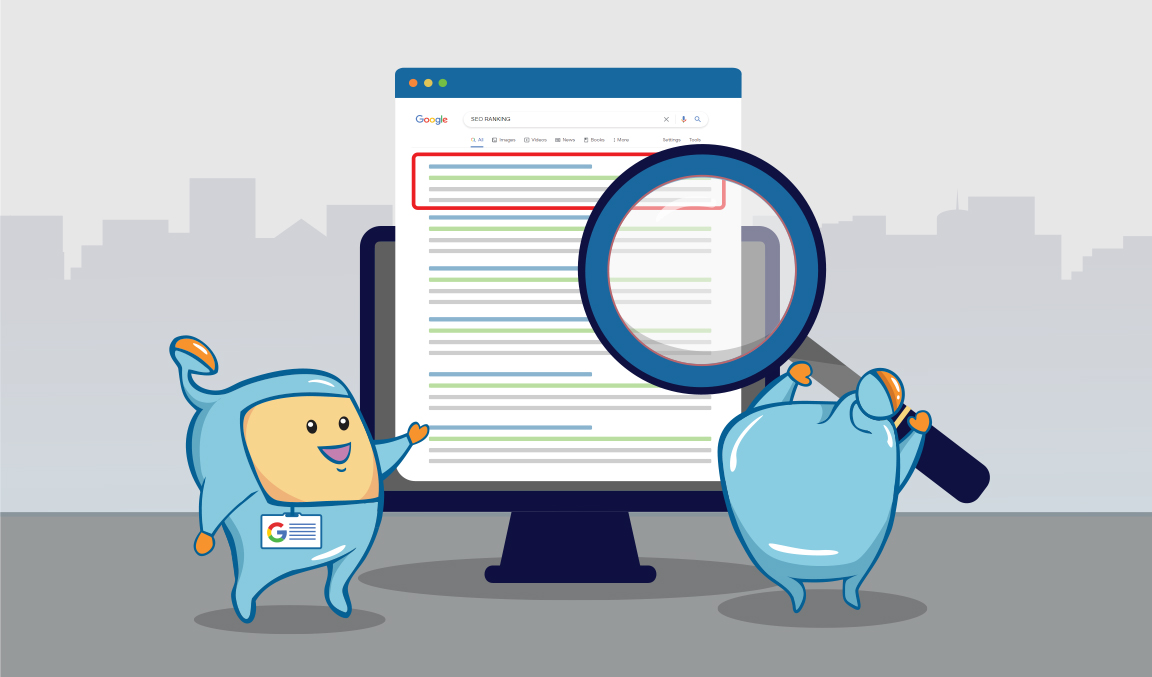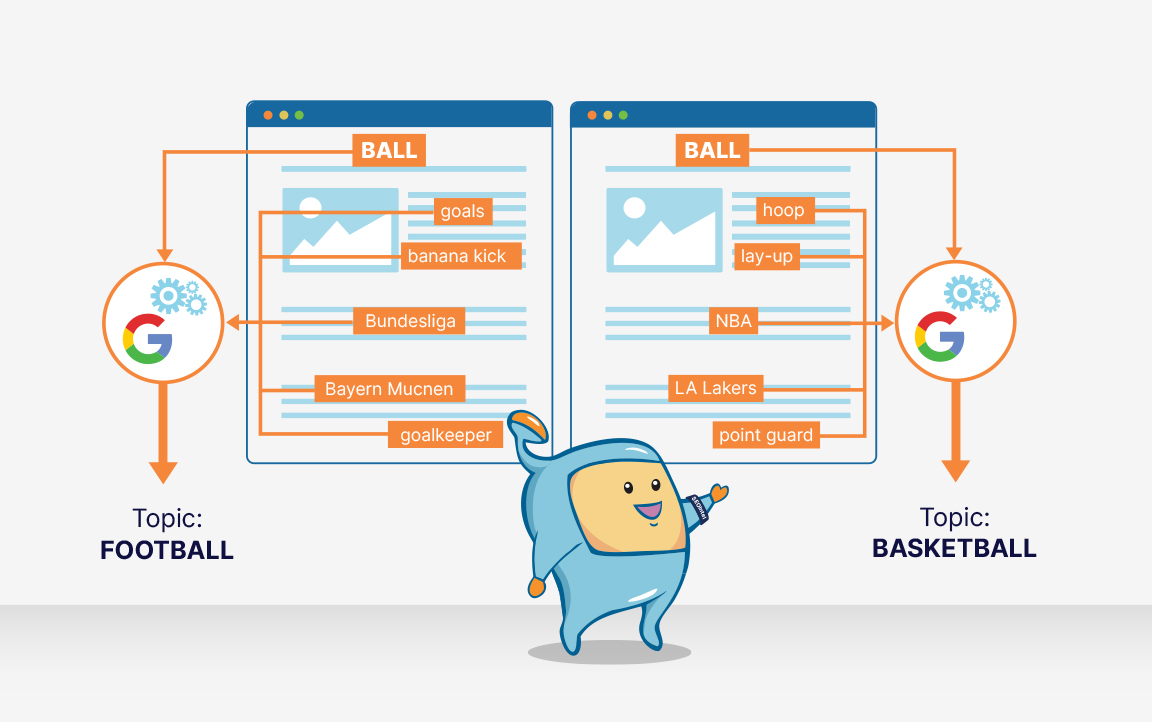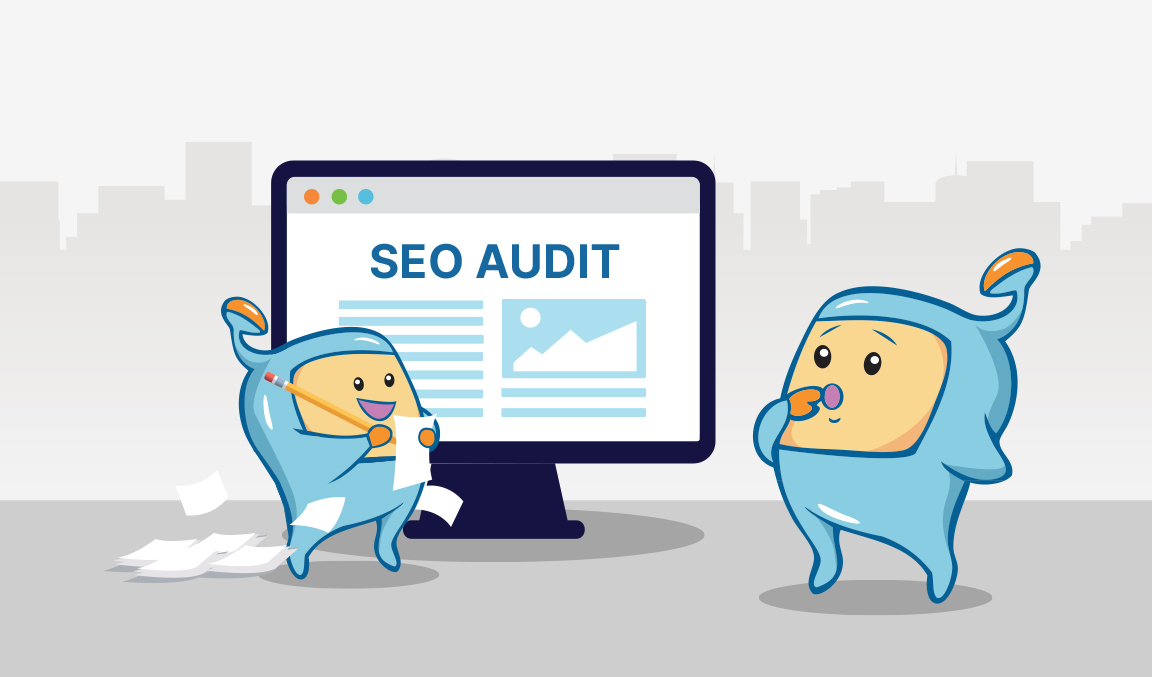Search engine visibility is a crucial aspect of online success.
It refers to how easily a website can be discovered by users when they search for relevant keywords on search engines.
High search engine visibility means that a website ranks well in search results and appears prominently, increasing the chances of attracting organic traffic.
On the other hand, low search engine visibility indicates that a website is not easily found by users, resulting in lower organic traffic and missed opportunities.

Achieving and maintaining high search engine visibility requires effective SEO strategies and continuous optimization efforts.
Let's dive in and discover how to enhance your search engine visibility.
Here is what you will read in this article:

Search engine visibility is a metric that measures how easily a website can be found by users when they search for relevant keywords on search engines like Google, Bing, or Yahoo.
It reflects the website's rankings in search results and its overall presence in the online landscape.
The higher the search engine visibility, the more likely it is for a website to attract organic traffic and potential customers.
It is determined by factors such as keyword rankings, search volume, click-through rates, and competition.
Tools like Moz Pro can provide a quick overview of search visibility in campaign dashboards.
However, it's important to note that visibility is not easily determined by a single universal metric.
To assess visibility accurately, it's crucial to analyze indicators from different time periods and monitor shifts in competitors' prominence.
Business owners can leverage this indicator to evaluate the effectiveness of their SEO efforts and objectively analyze the impact of optimization strategies.
Evaluating a website's search engine ranking involves considering its visibility in organic search results on desktop devices, enabling analysis, identifying potential optimization opportunities, and comparing performance with competitors or similar domains.
It's particularly useful for detecting trends and significant changes in search engine rankings, often occurring after algorithm updates.
SEO visibility is calculated using various data points, including keyword rankings, search volume, and click-through rates.
Different SEO tools and platforms have their own algorithms to determine SEO visibility scores.
These scores take into account the ranking positions of a website's URLs for relevant keywords, the search volume of those keywords, and the potential click-through rates based on the ranking positions.
The higher a website's rankings for valuable keywords with high search volume, the higher its SEO visibility score.
The calculation also considers the weighting of each ranking position and the click-through rate (CTR) data.
CTR in this context suggests that top rankings are generally clicked on more frequently than results at the bottom of the first results page or on subsequent pages.
At the same time, a search result that ranks, for instance, fifth and displays a video snippet would likely receive more hits than a basic text link at that same place.

SEO visibility is crucial for several reasons:
Firstly, it directly impacts the amount of organic traffic a website receives.
Websites with high search engine visibility are more likely to appear on the first page of search results, which receives the majority of clicks and traffic.
Businesses invest significant time and resources in creating and building websites with the primary goal of driving traffic and growing their business.
However, it would be a waste to overlook the importance of SEO.
Without proper search engine visibility, your website remains hidden and fails to attract the traffic, engagement, and conversions it deserves.
Ensure that your website is optimized for search engines to maximize its potential and reap the rewards of your efforts.
The Increased organic traffic leads to greater brand exposure, potential conversions, and business growth.
Secondly, SEO visibility reflects the effectiveness of SEO efforts and strategies.
Monitoring and improving search engine visibility allows website owners and marketers to assess the success of their optimization initiatives and make data-driven decisions.
It offers a comprehensive overview of your website's overall SEO performance, providing a high-level perspective on how well your optimization efforts are paying off.
It unveils the true extent of your website's share in the traffic landscape, giving you a clear picture of the portion of the traffic pie that you're capturing.
It helps identify areas for improvement and optimization opportunities.
Lastly, SEO visibility is a competitive advantage.
In highly competitive industries, outranking competitors and having greater visibility in search results can give a website an edge and attract more customers.
If your website isn't currently ranking at the top of the search engine results pages (SERPs), it's because someone else has claimed that position, and most likely, it's your competitor.
To succeed in SEO, it's important not only to elevate your website to the top but also to surpass your competitors.
The higher your website ranks on the page, the more likely it is to attract visitors before they even consider scrolling down to see other sites.
In fact, research shows that 31.7% of website visitors click on the first search result after conducting a Google search.
This means that if your website claims the top spot, it has a 10x higher chance of receiving traffic compared to websites listed further down.

Improving search engine visibility is a continuous process that involves implementing various SEO strategies and best practices.
Here are some key steps and techniques to enhance your website's search engine visibility:
Instead of solely focusing on highly competitive and generic keywords, target long tail keywords.
These are longer and more specific keyword phrases that have lower search volume but higher conversion potential.
Long tail keywords allow you to reach a more targeted audience and face less competition, increasing your chances of ranking higher in relevant search results.
Conduct keyword research to identify long tail keywords that align with your content and optimize your web pages accordingly.

With the increasing use of mobile devices, it is crucial to ensure that your website is mobile-friendly as Google and other search engines prioritize mobile-friendly websites in their rankings.
A responsive web design that adapts to different screen sizes and provides a seamless user experience on mobile devices is essential.
Potential customers might go to a competitor's website if yours is difficult to use on a mobile device or takes too long to download.
Test your website's mobile-friendliness using tools like Google's Mobile-Friendly Test and make necessary optimizations to improve user experience and search engine visibility.
Several significant benefits come with having a mobile-friendly website, including:
Optimize your title and description tags, which are displayed in search engine results, to make them compelling and relevant.
These tags should accurately describe the content of your web page and include relevant keywords to improve visibility.
A well-crafted title and description can increase click-through rates and attract more organic traffic.
Use unique and enticing meta tags for each page of your website, incorporating relevant keywords naturally and providing a clear summary of the page's content.
Earning high-quality backlinks from authoritative and relevant websites is an essential aspect of improving search engine visibility.
Backlinks are like votes of confidence from other websites, signaling to search engines that your content is valuable and trustworthy.
Focus on building relationships with influencers, industry experts, and other website owners to secure backlinks.
Create high-quality content that naturally attracts backlinks, or actively reach out to relevant websites for collaboration or guest posting opportunities.
Dwell time refers to the duration that users spend on your website after clicking on a search result before returning to the search results page.
When users enter their search terms into a search engine like Google, a list of websites is displayed as search results.
This is a critical moment for your website's success.
Once a user clicks on a link from the search results, they expect to find high-quality content that addresses their needs and interests.
However, if they quickly return to the search results page within five seconds, it indicates that they didn't find what they were looking for and are searching for alternative content.
Dwell time, measured from the moment a user clicks on a search result to when they return to the search engine results pages (SERPs), reflects how long users engage with a webpage.
To optimize dwell time, it's crucial to create engaging and informative content that captures users' attention and encourages them to stay on your website for longer periods.
Using clear and concise writing, incorporating visuals, and structuring your content in a way that invites users to explore further can all contribute to improving dwell time.
It's important to note that dwell time is distinct from "time on page" and "bounce rate." The longer the dwell time, the better, as it indicates that visitors have likely read most, if not all, of the information on a page before returning to the SERPs or performing another activity on the website.
One of the primary suggestions for increasing dwell time is to provide valuable and engaging content. It's common knowledge that poorly written or uninteresting content will not be read.
Quality content should be actionable, informative, entertaining (with elements like humor or surprising facts), and easily accessible. This applies to various content formats such as blog articles, infographics, or videos that are skimmable, conversational, and well-designed.
It's logical that people would spend more time on a page that offers substantial and comprehensive content.
By focusing on creating long-form content, which typically consists of at least 2,000 words, you can increase the value and relevance of your content, thus positively impacting dwell time and SEO performance.

The second page of search engine results typically receives only 1% of user attention on Google.
That's why a key strategy for enhancing your search engine visibility is to move your website from page 2 to page 1.
To identify which keywords your website ranks on the second page for, you can utilize the Google Search Console.
Once you've identified these keywords, you can focus on improving the content on those specific pages.
Consider adding more comprehensive information, including additional examples and techniques.
To enhance user engagement, incorporate interactive elements like screenshots, charts, and videos.
The primary objective is to concentrate your SEO efforts on these pages and work towards moving them up to Google's front page.
Start by analyzing the pages and identifying areas for improvement.
Enhance the content quality, optimize meta tags, update internal links, and enhance the overall user experience.
It's crucial to target relevant keywords and also build backlinks specifically to these pages.

LSI (Latent Semantic Indexing) keywords are valuable terms that are closely related to your main keywords and provide essential context to search engines regarding the content of your web pages.
To identify relevant LSI keywords for your content strategy, you can utilize tools such as keyword research tools and semantic analysis.
By incorporating LSI keywords into your articles, you not only improve the contextuality of your content but also gain SEO benefits:
These keywords play a significant role in helping search engines understand the topic and theme of your content, increasing the likelihood of it appearing in relevant search results.

Internal linking is a simple yet impactful SEO tactic that can significantly influence your search engine rankings.
It enables users to navigate from one page to another within the same website, using identical source and target domains for internal links.
The primary objectives of internal linking are to serve as website navigation tools, define the website's architecture and hierarchy, and distribute page authority and ranking power throughout the site.
To enhance your content's search engine visibility, it's essential to have a substantial number of internal pages that allow for the creation of many internal links.
Developing a strong content marketing strategy goes hand in hand with implementing an effective internal linking approach.
The more linkable content you produce, the more opportunities you have to establish internal links to various locations on your website.
By strategically linking relevant pages within your website using appropriate anchor text, you establish a clear website structure and make it easier for search engine crawlers to navigate and understand your content.
This not only improves search engine visibility but also enhances user navigation and engagement.

Conducting a comprehensive SEO website audit is crucial for identifying technical issues, on-page optimizations, and areas for improvement.
Utilize SEO auditing tools or seek professional assistance to analyze your website's performance in terms of speed, crawlability, mobile-friendliness, content quality, meta tags, and more.
By addressing any identified issues and optimizing your website structure, you can ensure adherence to SEO best practices.
Regular website audits are essential for maintaining and improving search engine visibility, as they keep your website technically sound and user-friendly.
A content audit, which evaluates your current website content and identifies opportunities for updates, removals, or redirections, plays a significant role in this process.
Whether you're a micro-business or a major international corporation, conducting a content audit can help you discover the strengths and weaknesses of your content strategy, enabling you to make necessary changes aligned with your current marketing goals.
For more information about SEO website audits and content audits, refer to our previous article.
To increase your search engine visibility, there are alternative approaches beyond simply climbing the search engine ranks.
One effective strategy is to optimize your presence in the "SERP Real Estate," which involves boosting the snippet for your website.
At the top of Google's search results, you'll find featured snippets, brief summaries of web pages that swiftly respond to user queries.
These snippets, which can include definitions, lists, steps, and tables, are automatically indexed by Google.
Targeting featured snippets and other rich snippets such as knowledge panels and local packs can significantly enhance your visibility to searchers, build brand recognition, and improve conversion rates.
To occupy more space on search engine results pages (SERPs), optimize your content to appear in these special SERP features.
This can be achieved by providing structured data, answering common questions, and tailoring your content to specific formats.
By expanding your "SERP real estate," you increase the likelihood of attracting clicks and ultimately boosting your overall visibility.
Improving search engine visibility and achieving higher rankings requires a holistic approach that includes various strategies and optimizations.
One crucial factor in search engine rankings is domain authority, which represents the overall strength and authority of your website.
To increase your domain authority and enhance search engine visibility, focus on building high-quality backlinks from authoritative websites, creating valuable and shareable content, optimizing on-page elements, and providing an excellent user experience.
By demonstrating expertise, trustworthiness, and relevance, your website's domain authority improves, leading to higher visibility in search engine results.
Enhancing domain authority is a challenging task as it involves analyzing a large amount of data and considering numerous ranking factors.
Tools like Moz's Link Explorer, MozBar, and SERP Analysis component of Keyword Explorer can help you determine the domain authority of any website.
By strengthening your overall SEO strategy and paying attention to external links, you can positively influence the domain authority metric and improve your website's competitiveness in Google search results.
Search engine visibility plays a critical role in the success of a website.
By understanding its definition, calculation methods, and significance, website owners and marketers can effectively improve their online presence, attract organic traffic, and outshine their competitors.
Implementing the SEO strategies and best practices discussed earlier significantly increases the chances of appearing in relevant search results and driving organic traffic to your website.
It's important to remember that search engine visibility is an ongoing process, and staying updated with SEO trends and algorithms is crucial.
Don't be one of those businesses that overlooks the power of SEO, search engine visibility is more critical than ever.
With an increasing number of people searching for products and services online, SEO is essential for effectively reaching your target audience.
Always keep in mind that providing what people desire should be the ultimate goal.
So, invest in improving your search engine visibility and ensure your website meets the needs and expectations of your audience.